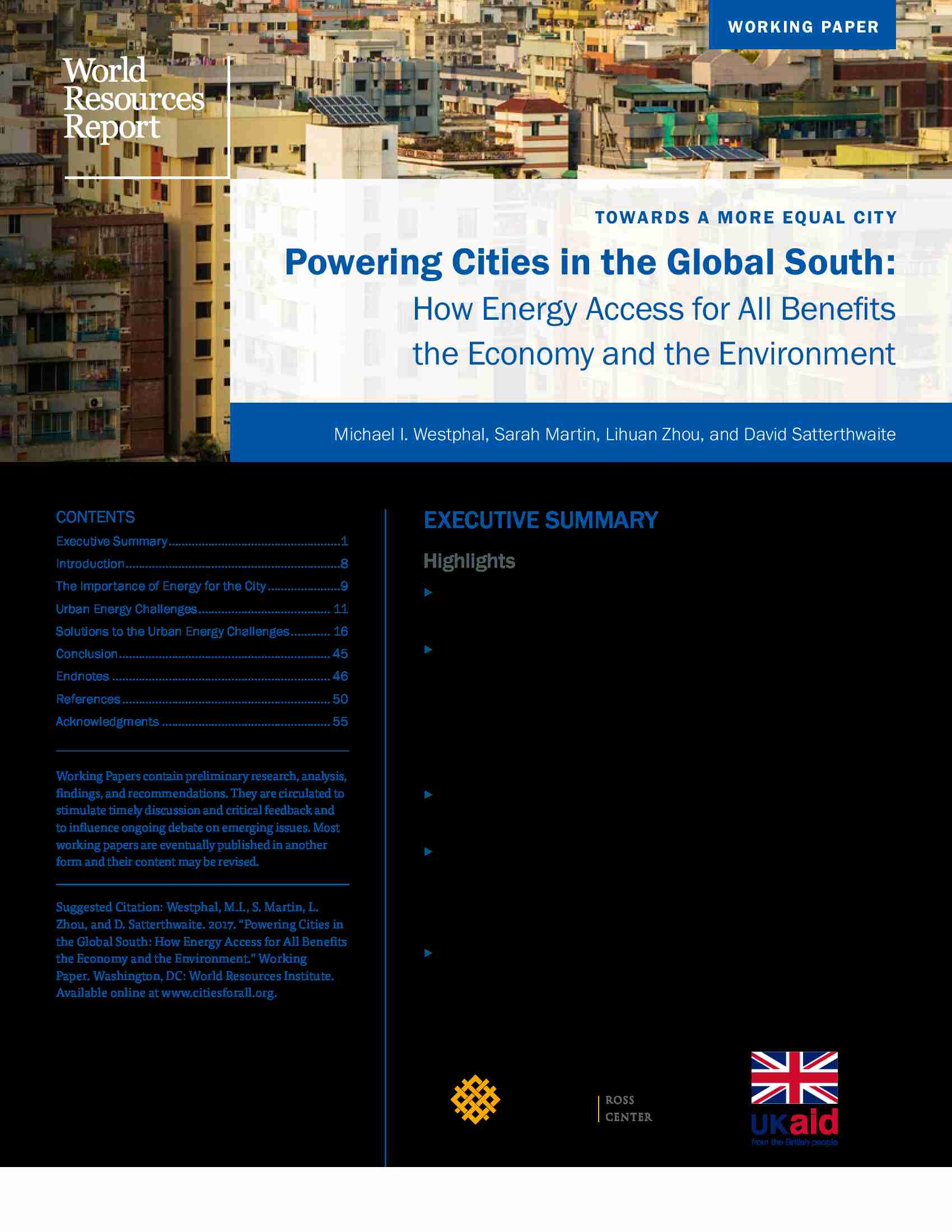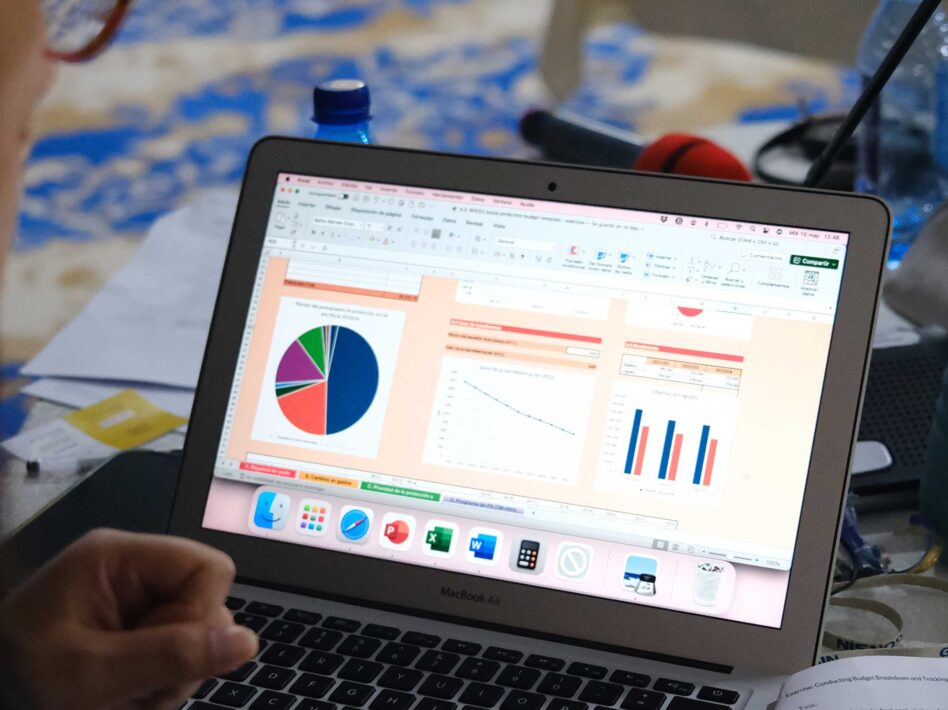Powering Cities in the Global South: How Energy Access for All Benefits the Economy and the Environment
The world is entering a new epoch of urbanization. By 2050 it is projected that two-thirds of the world’s population will live in urban areas, with a net urban population increase of 2.4 billion people from 2015, mostly in Africa and Asia.1 Cities that are already struggling to provide clean, affordable, and reliable energy for their residents will likely find it challenging to keep up with the pace and scale of growth. Without much-needed changes in approach, the urban “under-served” population—those who lack access to core services—will expand in cities in rapidly growing parts of the global South. This challenge presents an unprecedented opportunity to create a different kind of city: one that is more equal, where everyone has access to core services, and where all residents can live, work, and thrive.
This paper is concerned with the challenge of expanding access to energy in the growing cities of the global South. More specifically, it asks, How can cities in the global South provide cleaner, more affordable, and more reliable energy services to the under-served while achieving economic prosperity and safeguarding environmental quality?
View list of all: Research Reports

